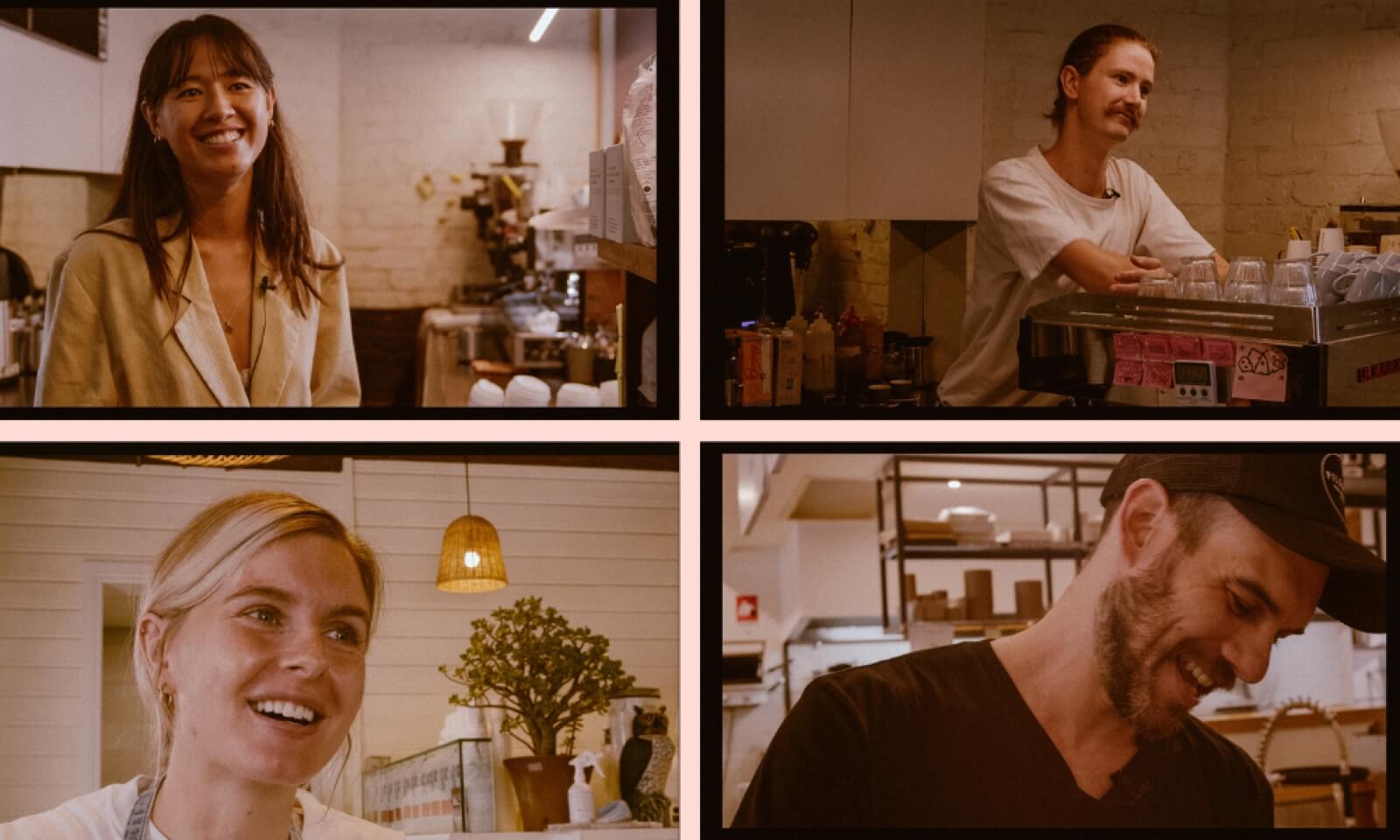What’s hot in coffee in 2023 - and what’s not
Coffee is Australia’s favourite beverage. We tell you what's trending in 2023.

Espresso, some milk, and you’re ready to go. Except, of course, it’s much more complicated than that - especially when we’re talking about Australia’s favourite beverage.
Every year, we take to the streets (or rather, we tap in to our network) and chat to baristas and coffee roasters about what the latest trends in coffee are.
There’s always a bit of a surprise every year as consumer tastes and preferences keep shifting. Last year, it was all about the plant milk - but some baristas say that they’ve noticed more drinkers asking for traditional dairy. But oat is also a favourite? Try and keep up.
You don’t want to be out of the loop, so settle in with your favourite brew, and hear what these coffee aficionados have to say (at least, until next year, when it all changes again).
1. Dairy milk is back (but don't forget oat)
Depending on the day and the article you read, it seems that there’s a different milk (or mylk) on the market. One day it’s soy, then it’s almond - and then it’s back to cow’s milk.
When it comes to coffee though, tastes fluctuate. Speaking with Jess Dufficy from Surry Hills cafe, Four Ate Five, it’s clear that in the plant milk category at least, oat is the winner. “When we do our reports, I can see that oat is always popular,” she says. “Oat milk, I'm telling you…it’s taken over the soy fad.”
Yas Yalim and Sam Rigio from Saltie in Surry Hills agree that oat milk is having a moment, but have noticed a swing back towards full cream milk. “I’ve noticed that people are drinking more full cream,” says Sam. “But people are conscious of the brand of milk - it’s not just any old dairy milk... We use Otway Pastures.”
Iris, a barista from Sample Coffee, also in Surry Hills agrees. “Milk has become a thing again. I’m seeing people order more dairy, and I think that’s because some alt milks have a lot of preservatives and other stuff. So it’s largely because of health reasons.”
2. Ice, ice baby - keep that coffee cold
“Until a month ago, iced lattes were really a thing. I noticed we were running out of ice,” says Jess Dufficy from Four Ate Five. She’s not talking about your old-school iced coffee, complete with a puff of cream on top. This is your regular coffee - made hot, and then cooled down
“Coffee's that brewed hot and chilled preserves a lot of aromatics,” says Paul Geshos, founder of Mecca Coffee. “It’s different cold brew that can have an oxidised flavour and is more generic in its flavour profile.”
Adam Marley from Monastery Coffee in Adelaide agrees that cooling down coffee seems to be something coffee geeks are getting into. “Every coffee geek seems to be experimenting with the technique, usually with homemade versions utilising whisky balls (the metal kind with liquid inside, not stones).”
3. Yes, you CAN have coffee...in a can
The trend for cooling down coffee goes further with coffee in cans. Says Paul Geshos from Mecca: “My observation on a global level, is canned coffee. On a recent trip to the US, half of the coffee drinks that were sold were cold coffee drinks in cans, or freshly prepared espresso drinks in cans. I noticed this in Japan and Korea, even ten years ago.”
Louisa from Sample Coffee agrees. “Coffee in a can has definitely has been popping up. Venues sometimes get coffee from somewhere and then put the cafe name on the can. I’ve seen that at some cafes in Marrickville.”
4. Coffee additions and better de-caf
Last year, Arun Grewal from Coffee Brewing Pro said that in addition to black coffee, there’s an increase in the rise of coffee additions to optimise the caffeine kick.
“There’s been a rise in additions such as collagen powders, chaga mushrooms and more. The Bulletproof coffee brand and trend illustrate this - and consumers are loving it.”
A year later, and the trend continues, with distributors like Michael Vassallo from Orenda Goodness noticing more orders for medicinal mushroom drinks, which some cafes might add to coffee. “I can say we are seeing a slowly growing trend towards the medicinal mushroom drinks like this this Majic Mate.
This desire for wellness, extends to decaf coffee. People want to have their coffee, and drink it more than once a day too. “Decaf coffee happens at the start of every year, and then it starts to taper off as the year goes. People try to kick their vices and decaf is getting better every year,” says Iris from Sample Coffee.
Yas and Sam from Saltie echo her sentiment. “Decaf has picked up a lot. A lot of people are doing one regular and one decaf, conscious of how much caffeine they're taking in.”
5. The growing love for batch brew
Batch brew is pour over coffee created using machine assistance to do the pouring over of water onto coffee…and the enthusiasm for it continues to grow. It’s popular with cafes because it’s easy to achieve consistency, and drinkers feel it’s the refined and precise way to consume black coffee.
“Filter and batch brew has come a long way,” say Sam and Yas from Saltie cafe. These days people come in and ask what filter you're using today. It’s a small market but it's growing.”
Jess from Four At Five concurs, simply: “batch brew is growing in popularity.”
6. Spreading wings to tea and chocolate
Adam Marley from Monastery Roasters has seen the obsession with coffee spill over in to other areas.
“For a while now we’ve retailed specialty chocolate (Birdsnake) and tea (Australian Tea Masters, Spill and KUURA) because they’re delicious and align with our values. Unfortunately we’ve never seen a huge volume of sales with either tea or chocolate…but that seems to be changing!”
He says he’s noticing more and more coffee drinkers get into other specialty products like chocolate and tea. “Maybe it’s emblematic simply of flavour geeks spreading their interests but I like to think it also suggests an uptick in the wider trend of consumers appreciating producers and provenance more.”
Categories
Trends
Food lover, restaurant-goer, hospitality appreciator, and writer of content at Ordermentum.







